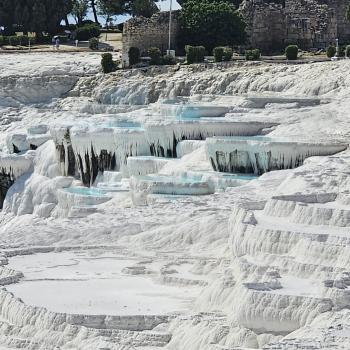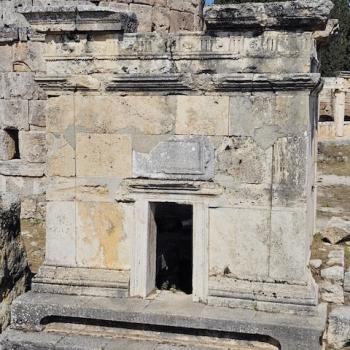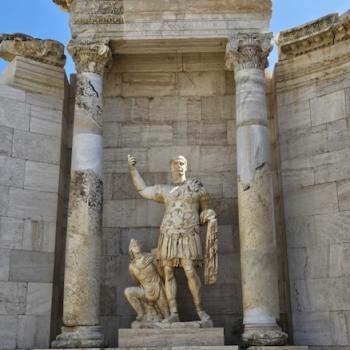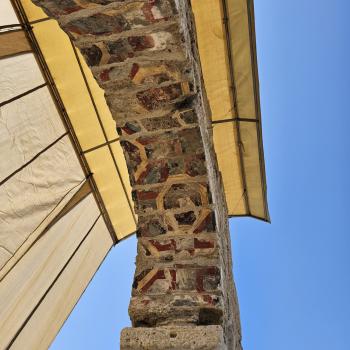As I said in the previous post, the essence of ancient religion of was priests, temples, and sacrifices. If there is one way I would fault professor Schmidt it is that he is not taking into account the ancient literary evidence about the origins of humanity and its religion. He is basing everything on archaeology of material remains. Not merely the Bible but various other ancient sources like the Babylonian Genesis tales have something to say on the matter. The material evidence needs to be compared to the literary evidence. When we do this it leads to certain suggests about Gobeckli becoming more probable, namely that this is a place of sacrifice of the various animals depicted on the columns. Here for your perusal are several of the more interesting standing stones at Gobeckli—
 This first image is courtesy Nat Geo from its latest issue (June 2011). As Schmidt suggests, at least some of these monoliths seem to represent human beings— see the hands and loin cloth on this one. But others focus exclusively on the critters, with sometimes multiple critters on one stone.
This first image is courtesy Nat Geo from its latest issue (June 2011). As Schmidt suggests, at least some of these monoliths seem to represent human beings— see the hands and loin cloth on this one. But others focus exclusively on the critters, with sometimes multiple critters on one stone.
We need to keep in mind that this is not a site set up by St. Francis, to celebrate all creatures great and small. And we also need to keep firmly in mind that various of these creatures, indeed maybe all of them were not for human consumption— scorpions, vultures, warthogs, Water buffalo, even images crocodiles are involved. These animals may well have been used for sacrifice, but they were not anybodies lunch or pets. Consider for example a couple of the statues found here and at nearby Nevali Cori which are now in the Urfa museum.  The first one below I like to call— ‘my grandma, what big teeth you have’.
The first one below I like to call— ‘my grandma, what big teeth you have’. 
It might be nearer the truth to say that sacrifices were offered on this site to ask for divine protection from such animals. Schmidt says many gazelle bones have been found on the site, and he theorizes they were lunch for the workers. Possibly, but it is just as possible they were the sacrifices, and the animals depicted are the ones the sacrificers wanted protection for.
Another theory suggested by Schmidt is that the animals were seen as spirit guides into the divine presence, ala animistic religion such as one finds in some cases with American Indians. I doubt this is the case. Many of these animals are dangerous and were seen as evil. They might be the object of prayers for protection, or sacrifices for protection, or even they might be what was sacrificed. But I see no evidence of Neo-lithic and pre-Neolithic peoples practicing pantheism or animism of the sort suggested in the book. 
In any case, it is most probable that sacrifices were offered at Gobeckli. And sacrifices can serve a variety of purposes, but what they reflect is the inherent religious tendency to seek divine help in a dangerous and dark world. But there is more— sacrificial practice implies that someone other than animals or humans are the deities. They also on regular occasion indicate that this or that human feels estranged from their god and needs help and reconciliation and perhaps even atonement for the sacrificier is worried about an angry god who needs to be propitiated. Indeed, propitiation is right at the heart of ancient sacrifice in the literary sources from the ANE including the Bible. We will examine more aspects of this in the next post.















